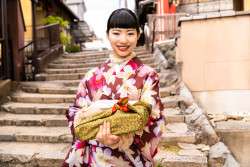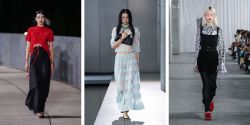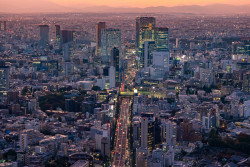
Originally published on metropolis.co.jp on July 2013

In the deluxe surroundings of one of Tokyo’s premium hotels, visitors can take a free tour through four differing interpretations of Japanese serenity.
The ANA InterContinental Tokyo is an interesting setting; filled with high-end travelers, many of whom are passing through on business, the lobby’s cascading waterfall and babbling voices already form an island of designed tranquility.
The hotel hosts high-profile meetings—Prime Minister Shinzo Abe is said to visit once a week—and it is among these illustrious witnesses that Tokyo-based French curator Caroline Trausch places the works of four contemporary artists, represented by Emon Photo Gallery.
Many Japan visitors will have marveled at how this country brings relaxation to the level of a science. The fiercely knitted brows of someone bathing in an onsen, the suspended sanctity of a manicured garden, silence on the bus—people live in close proximity through harnessing a means of transcendence.
Eriko Koga has travelled to and from sacred Mt. Koya for the past four years, shooting people and natural features there. Tourists travel there to experience monastic life—a trip of affected tranquility. Koga’s works on the other hand provide an intimate view of Koya-san without the intrusion a tourist—namely you—would bring.

Kiiro’s two large colorful works of flowers in a field have an instant impact, prompting the question of whether it is a photo or a painting, a drawing, or a combination of all these things. A former oil painter, Kiiro brings the layering and texturing of that approach to photographic design, creating a heady feeling of being in among the wild things—and a contrast to the manicured tradition of Japanese gardens.
Ryo Ohwada provides the other side with his stunning collection of bonsai trees photographed and blown up against a gold-leaf background. The twisted trunks take on the appearance of a major force of nature. Staring at the miniature trees is said to draw the viewer in to become lost in contemplation. Ohwada’s painstaking work splashes this process across the wall meaning you analyze your reactions even as you feel the effects.
One floor under the lobby, Sarah Fujiwara helps you feel as if you have descended into the water table. She creates her works with different parts of the lotus flower, embedding root and twig and even smearing soil before covering it all with a perspex-like sheen that suspends the splatter on the wall. The works were created post-3/11, and the visceral rendering of nature evokes the silence before, or after, the storm.







